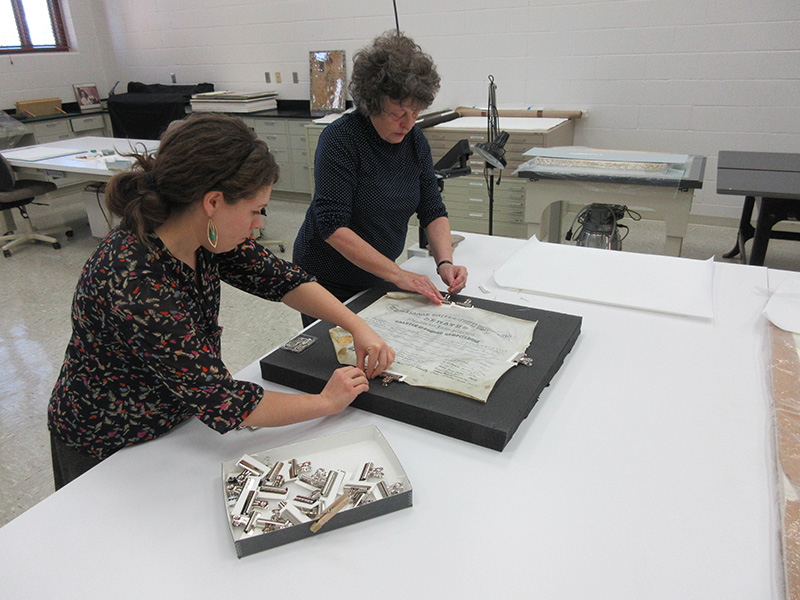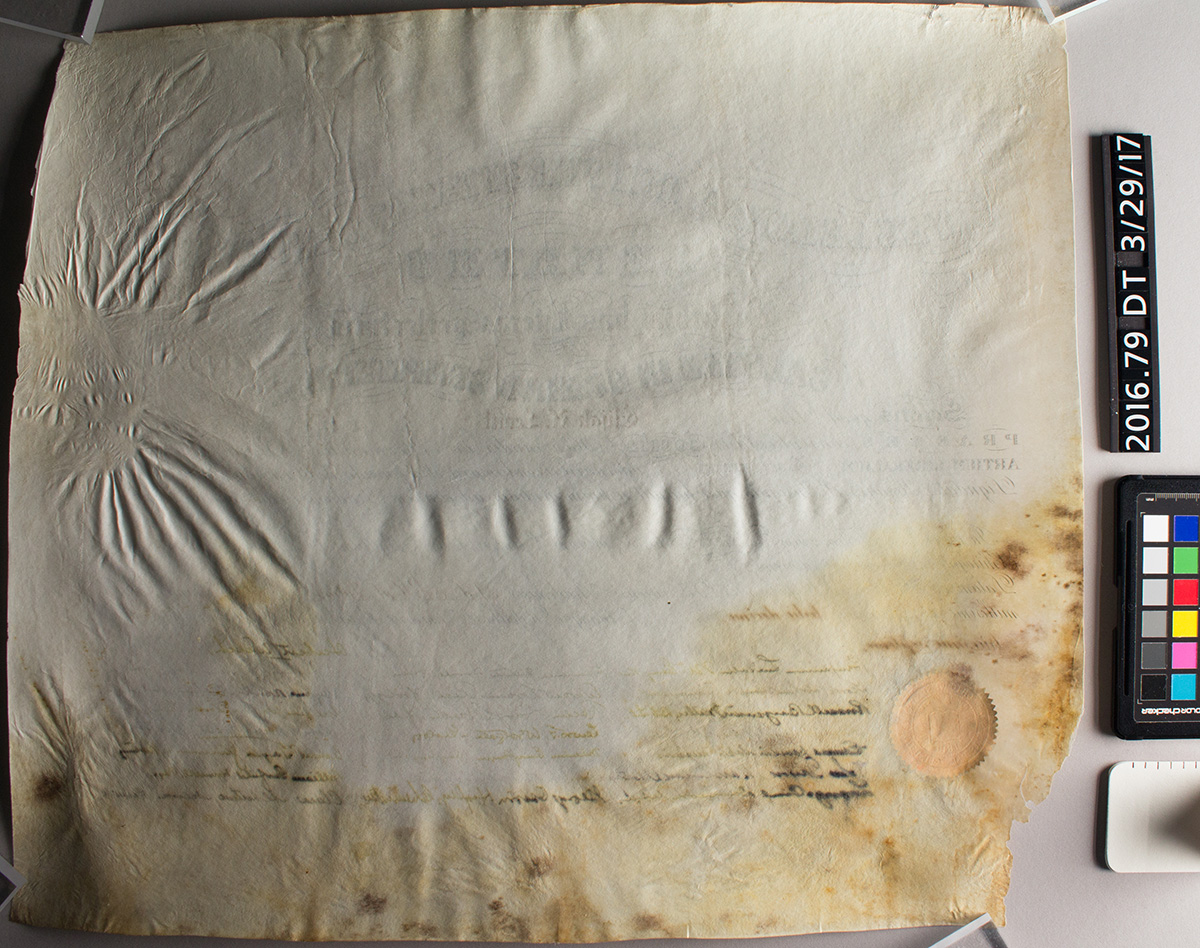It’s easy to take paper for granted. We use it for everything: writing, printing, books, receipts, packaging, money, even for cleaning. We throw it away without a second thought. But what did people use before paper? Paper as we know it wasn’t even invented until the second century CE. Before that, people used different materials for writing such as clay tablets, papyrus, and parchment which is our topic today.
Parchment is a sheet material that is made from the scraped skins of domesticated animals such as sheep or cows. Paper is made from plant materials. Often it can be difficult to tell the two apart, especially with modern, coated papers that actually feel like parchment and have misleading names like “parchment paper” or “vellum paper.” When it comes to conservation, parchment is usually treated by a paper conservator because paper and parchment share common issues like tears, surface dirt, and distortions. However, it is important to remember that true parchment is not paper. Some treatments that are appropriate for paper, such as washing, could be destructive to parchment.

This is a photo of the back side of a parchment diploma before treatment. The diploma was exposed to moisture which caused it to cockle. Mold also began growing in the lower half, causing staining and weakening resulting in the loss of the lower right corner.
Parchment is usually very strong and durable. It is more resistant to abrasions and tearing than paper. It is, however, highly susceptible to the environment. Parchment is hygroscopic, which means it attracts water. This makes it “dimensionally unstable,” causing it to expand and contract in relation to the temperature or relative humidity around it. This usually leads to distortions, which can look like ripples or undulations in the parchment. This can disturb the media on the parchment and cause flaking. High humidity can also lead to mold growth. Besides the cosmetic problems of staining, mold can break down the collagen structure of the parchment making it weaker.
The parchment was placed in a humidification chamber to carefully increase the humidity and allow the parchment to relax before it was stretched and dried.
How is parchment treated? Much like paper, it can be mended. In some cases, it can be mended with paper, but usually a tear or hole would be mended with another animal protein such as Goldbeater’s skin which is made from cow intestine. Fish skin membrane, made from the swim bladder of certain fish can also be used.
Distortions are the most common conservation issues with parchment. They can be helped with careful humidification and flattening under weight or through tension drying. Like paper, once the parchment is humidified, it relaxes and will retain the shape in which it is dried. Drying parchment between sheets of blotter under glass with weights on top can be effective for thinner parchments. The blotter absorbs the moisture and the glass distributes the weight evenly.

With particularly challenging treatments, we sometimes have to call in reinforcements. This time paper conservator Hilary LeFevere was able to get the help of retired paper conservator Dr. Sheila Fairbrass Siegler to assist with putting the diploma under tension to dry.
Tension drying requires that the parchment is pulled tightly so the tension across the surface is evenly applied. This done using clamps or clips and pins. In order to get even tension, it usually requires at least two people to gently stretch the parchment on opposite sides. Each person then clamps the edge at the center and pins it to the foam underneath. Then they do the same on the perpendicular sides. From the center, they work their way out to the corners so the tension is as even as possible. The foam support allows the pins and clamps to give slightly as the parchment contracts as it dries. It is a delicate process as the parchment is more vulnerable when it is humidified and can tear if the tension is too strong. But once the tension is applied well, it is very affective in improving the appearance and surface quality of the parchment.
When using clips to hold parchment under tension, it’s important to cushion each of the clips so they don’t leave impressions in the parchment once it is dried. Each clip has foam and blotter on either side to distribute the pressure at each tension point.
Once flattened, the parchment is usually hinged onto a piece of mat board with many small paper hinges all the way around. These hinges will hold the parchment in place with even tension, but will also give slightly as needed as both the paper and the parchment respond to environmental factors.

After drying, the diploma is significantly flatter. Some areas had been damaged and hardened from previous exposure to water, and therefore the parchment couldn’t be completely flattened. But now the diploma is more stable, legible, and able to be safely matted and framed.
Our staff is ready to assist you with your conservation needs. Contact our conservators at 402-595-1180 or email [email protected].



